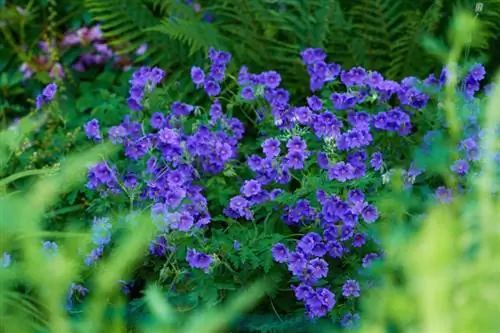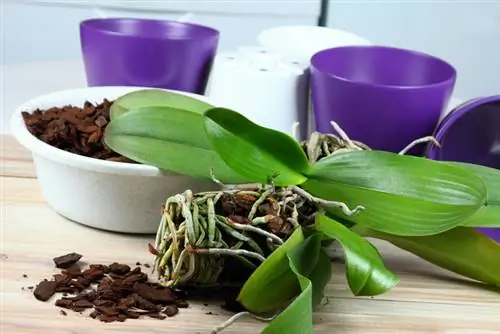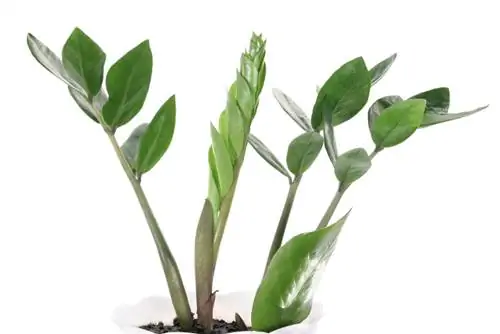- Author admin [email protected].
- Public 2023-12-16 16:46.
- Last modified 2025-06-01 06:02.
Storksbills differ not only in terms of their preferred locations depending on the species, but also in terms of the best way to reproduce. With the exception of the hybrids, almost all cranesbill species can be easily propagated by sowing, but reproduction by cuttings or, in the case of older specimens, by division is also possible. You can find out which species are particularly suitable for this type of propagation and how it is carried out in the article below.

How do you divide cranesbills correctly?
Dividing cranesbills is achieved by digging up the plant in spring or summer, removing soil from the rhizome and dividing it into several sections with shoots and strong roots. Then plant the divided pieces in the desired location and water them thoroughly.
Sharing a cranesbill - Here’s how it works
For perennials - which also include cranesbills - propagation by division is an uncomplicated and tried-and-tested method that also has the advantage of rejuvenating older plants and thus extending their lifespan and their growth and growth to stimulate flowering joy. And this is how the division of a cranesbill works:
- The optimal time, depending on the species, is in spring or summer.
- Dig up the entire plant using a digging fork.
- Be careful not to squeeze or otherwise damage the roots unnecessarily.
- Shake the soil away from the rootstock thoroughly.
- Now divide it into at least two (but also more) individual pieces.
- You can use sharp scissors, a knife or even a spade.
- Make sure that each section has at least one shoot with strong roots.
You can then plant the freshly divided cranesbills in the previously determined location or in a planter. Water the plants thoroughly until they have taken root and grown successfully.
Geranium species suitable for propagation by division
The following cranesbill species are suitable for vegetative propagation by division:
- Cambridge cranesbill (Geranium cantabrigiense), division in spring
- Grey cranesbill (Geranium cinereum), division in spring
- Clarke's cranesbill (Geranium clarkei), division of the rhizomes in summer
- Hybrid “Rozanne”, division in spring
- Himalayan cranesbill (Geranium himalayense), division in spring
- Heart-leaved cranesbill (Geranium ibericum), division in spring
- Rock Cranesbill (Geranium macrorrhizum), division in spring
- Magnificent Cranesbill (Geranium magnificum), propagated exclusively by division in spring
- Oxford cranesbill (Geranium oxonianum), propagation by division in spring
- Brown cranesbill (Geranium phaeum), division in spring
- Caucasus cranesbill (Geranium renardii), division in spring
- Blood-red cranesbill (Geranium sanguineum), division in spring
- Siberian cranesbill (Geranium wlassovianum), division in spring
Tip
Moisture is a crucial factor for both root formation and root growth. Therefore, the freshly divided plants need to be watered regularly. However, it is better to use a protective cover made of plastic (e.g. a cut plastic bottle is ideal) or a glass bell to create tense air and thus high humidity. In any case, you must avoid excessive moisture so that rot does not develop.






